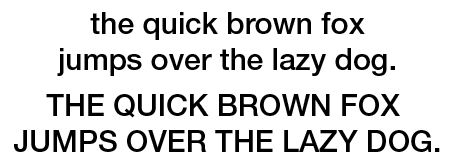
Helvetica 65 Font
Download Helvetica Neue LT Std 65 Medium, font family Helvetica Neue LT Std by with 65 Medium weight and style, download file name is HelveticaNeueLTStd-Md.otf.
For other uses, see. Helvetica, Eduard Hoffmann Date released 1957 Design based on Helvetica or Neue Haas Grotesk is a widely used developed in 1957 by Swiss with input from Eduard Hoffmann. Kuroko no basket season 2 episode 2 english sub.
Helvetica is a or realist design, one influenced by the famous 19th century typeface and other German and Swiss designs. Its use became a hallmark of the that emerged from the work of Swiss designers in the 1950s and 60s, becoming one of the most popular typefaces of the 20th century. Over the years, a wide range of variants have been released in different weights, widths and sizes, as well as matching designs for a range of non-Latin alphabets.
Notable features of Helvetica as originally designed include a high, the termination of strokes on horizontal or vertical lines and an unusually tight spacing between letters, which combine to give it a dense, compact appearance. Developed by the Haas'sche Schriftgiesserei () of,, its release was planned to match a trend: a resurgence of interest in turn-of-the-century 'grotesque' sans-serifs among European graphic designers, that also saw the release of by the same year. Hoffmann was the president of the Haas Type Foundry, while Miedinger was a freelance graphic designer who had formerly worked as a Haas salesman and designer. Miedinger and Hoffmann set out to create a neutral typeface that had great clarity, no intrinsic meaning in its form, and could be used on a wide variety of signage.
Originally named Neue Haas Grotesk (New Haas Grotesque), it was rapidly licensed by Linotype and renamed Helvetica in 1960, being similar to the for Switzerland,. Create pdf file from vb6 string to array. A directed by was released in 2007 to coincide with the 50th anniversary of the typeface's introduction in 1957. A 1969 poster by Robert Geisser exemplifying the 'Swiss' style of the 1950s and 60s: solid red colour, simple images and neo-grotesque sans-serif type, avoiding all-caps. This design appears to use Helvetica or a close imitation. The main influence on Helvetica was the popular Akzidenz-Grotesk from; Hoffman's scrapbook of proofs of the design shows careful comparison of test proofs with snippets of Akzidenz-Grotesk. Its 'R' with a curved tail resembles Schelter-Grotesk, another turn-of-the-century sans-serif sold by Haas.
Wolfgang Homola comments that in Helvetica 'the weight of the stems of the capitals and the lower case is better balanced' than in its influences. Attracting considerable attention on its release as Neue Haas Grotesk ( Nouvelle Antique Haas in French-speaking countries), Stempel and adopted Neue Haas Grotesk for release in, the standard typesetting method at the time for, and on the international market. In 1960, its name was changed by Haas' German parent company to Helvetica (meaning Swiss in ) in order to make it more marketable internationally. It comes from the Latin name for the of what became Switzerland. Intending to match the success of, Arthur Ritzel of Stempel redesigned Neue Haas Grotesk into a larger family.